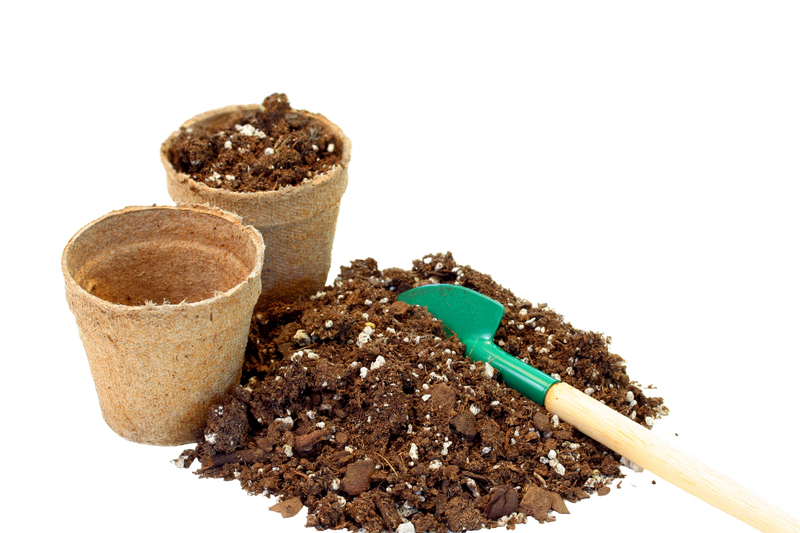Protective Measures: Guarding Your Garden from Weather Disasters
Posted on 20/05/2025
Protective Measures: Guarding Your Garden from Weather Disasters
Gardening is a labor of love, offering therapeutic benefits and bountiful rewards. Yet, the unpredictability of the weather poses ongoing threats to your cherished plants. From violent storms to scorching heatwaves and freezing colds, weather disasters can deal devastating blows to both novice and seasoned gardeners alike. Adopting effective garden protection measures is pivotal for preserving your green space through all seasons.

The Impact of Weather Disasters on Home Gardens
Mother Nature's unpredictability comes in many forms--heavy rainfall, extended droughts, sudden frost, windstorms, hail, and even wildfires. Each disaster brings specific risks, such as soil erosion, root damage, foliage destruction, and even complete plant loss. Understanding these threats is the first step toward fortifying your garden against nature's tempests.
- Heavy rain: Can cause waterlogging, soil erosion, and root rot.
- Prolonged drought: Dries out soil and stresses plants, leading to wilted or dead vegetation.
- Frost and freezes: Damage plant cells, especially in tender or tropical species.
- High winds: Break stems, uproot young plants, and strip away protective mulch.
- Hailstones: Shred leaves and bruise or destroy fruits and flowers.
Given these myriad threats, implementing robust garden weather protection strategies is not just wise--it's essential for long-term success.
Preparation Before Disaster Strikes: Proactive Prevention Strategies
1. Selecting Weather-Resilient Plants
An essential step in safeguarding your garden from weather extremes lies in choosing the right plants. Native plants or species adapted to your region's climate inherently require less intervention. Seek out varieties with proven resistance to local weather patterns, such as drought-tolerant perennials or cold-hardy shrubs. The right selection can drastically reduce losses during adverse events.
- Opt for drought-resistant plants in arid regions.
- Choose frost-hardy species if you live in a temperate zone.
- Plant windbreaks using dense hedges or evergreen trees.
2. Soil Preparation and Mulching
Healthy, well-drained soil is your first line of defense against many weather-related issues. Double-digging and the addition of organic matter like compost and aged manure improve soil structure, promote drainage during heavy rain, and enhance moisture retention during drought. Applying a generous layer of mulch (wood chips, straw, or leaves) helps regulate soil temperature, prevents erosion, and shields roots from temperature extremes.
- Mulch Insulates: Shields roots from freezing or overheating.
- Reduces Water Runoff: Helps retain moisture during hot weather and lessens flooding during storms.
- Suppresses Weeds: Gives your plants a competitive edge, especially after disasters.
3. Drainage and Irrigation Planning
Effective water management is crucial for garden durability. Over-saturation from storms or complete dryness from drought can both spell disaster. Install French drains, rain gardens, or raised beds where flooding is a concern. For arid zones, invest in efficient drip irrigation systems or soaker hoses, outfitted with timers and rain sensors for optimum moisture control.
- Rain barrels: Store excess water for use during droughts.
- Swales or berms: Redirect floodwater away from key plantings.
- Permeable paving: Prevents slick surfaces and promotes gradual water absorption.
Weather Disaster Protective Measures: Step-by-Step Guide
Stormproofing Your Garden
Violent thunderstorms and hurricanes can uproot, batter, or drown plants. Guard against these threats with sturdy storm protection measures:
- Stake Tall Plants: Use bamboo stakes or heavy-duty cages to shore up tomatoes, sunflowers, or saplings.
- Row Covers and Netting: Lightweight fabric or mesh can shield delicate crops from hail and wind-blown debris.
- Temporary Fencing: Install windbreak fences on the windward side, made of burlap or snow fencing for quick response before a storm hits.
Regularly inspect mature trees near your garden for dead branches, which can become hazardous projectiles in high winds. Prune as needed or consult an arborist to minimize risks.
Drought Defense Strategies
As global temperatures rise, garden drought protection measures become increasingly important. Conserve water and maximize its efficiency with these methods:
- Deep Watering: Encourage deeper root systems by watering less frequently but more thoroughly.
- Windbreaks: Strategically placed shrubs or fences can reduce moisture loss from wind.
- Shade Cloth: Install shade structures for vulnerable plants, limiting direct sun exposure during peak heat.
Consider grouping plants by water need (a method known as hydrozoning) to optimize irrigation efficiency.
Frost and Freeze Protection
Even in milder climates, late spring or early autumn frosts are notorious for nipping new growth. Try these frost-guarding techniques:
- Floating Row Covers: Drape lightweight fabric over crops in the evening to trap warmth overnight.
- Cloches: Utilize glass or plastic domes to shield tender seedlings.
- Insulate with Mulch: Pile straw or leaves around the base of perennial plants to protect roots.
- Water Before a Freeze: Moist soil absorbs and retains more heat than dry soil.
Remember to remove covers in the morning to prevent overheating and ensure plants receive sunlight.
Hail and Debris Protection
Hailstones can devastate a garden in minutes. To defend your garden from hail damage:
- Hoop Houses: Construct semi-permanent frames covered with netting or poly sheeting over vulnerable beds.
- Pop-up Shelters: For quick responses, store pop-up tents, old window screens, or even cardboard boxes for emergency plant coverage.
If you're in a hail-prone region, consider permanent greenhouses for your most delicate plantings.
Protective Technologies and Modern Innovations
Smart Garden Sensors and Automation
The latest tools can take much of the guesswork out of garden weather disaster prevention. Smart moisture sensors, temperature monitors, and automated irrigation systems adapt watering regimes based on real-time conditions. Some advanced weather stations even connect to your smartphone, issuing alerts before weather emergencies strike.
- Set alerts for frost or heat events and activate protection gear in advance.
- Receive watering recommendations tailored to your soil moisture and rainfall.
These technological tools offer both peace of mind and efficiency, supporting your garden--rain or shine.
Greenhouses and Cold Frames
For those determined to shield sensitive crops, your ultimate protective measure is a greenhouse or cold frame. These structures buffer against temperature swings, intense rainfall, hail, and wind--all while extending your growing season. Well-designed greenhouses can include automatic vents, heating mats, and fans to maintain an optimum environment.
- Choose polycarbonate or tempered glass for durability against hail and debris.
- Orient greenhouses to maximize sunlight and minimize wind exposure.
Emergency Response: After the Weather Disaster
No matter how careful you are, sometimes nature wins. After any extreme event, assessment and recovery are key. Follow these steps to help your garden bounce back:
- Inspect Damage: Remove broken branches, damaged fruits, and debris.
- Prune Wisely: Only prune back what's necessary to prevent further stress.
- Boost with Compost: Add a layer of organic matter to encourage recovery.
- Be Patient: Some plants will bounce back with minimal intervention, while others may need replacing.
- Re-locate if Needed: Consider moving delicate potted plants indoors or to a more sheltered garden spot for the remainder of the season.
Record what worked and what didn't after each event and refine your strategies year after year. A garden that weathers the storm is one built on experience and adaptation.
Insurance and Long-Term Garden Resilience
For larger landscapes or valuable plant collections, consider specialized garden or landscape insurance policies that cover weather-related losses. While such coverage is uncommon for smaller home gardens, it may be worthwhile for avid landscapers or those with unique, hard-to-replace specimens.
Long-term resilience can be further improved by integrating sustainable practices such as:
- Permaculture principles: Using garden design that mimics natural ecosystems improves biodiversity and resilience.
- Rainwater harvesting: Reduces resource consumption and ensures water supply during droughts.
- Regular preparedness drills: Set reminders to check your protective systems at the start of each season.
Ready Your Garden: A Year-Round Weather Protection Checklist
- Spring: Inspect for winter damage, refresh mulch, check drainage, and stake plants as needed.
- Summer: Prepare shade covers, monitor soil moisture, and watch for drought stress.
- Autumn: Mulch heavily, wrap tender trees, and install frost protection as temps drop.
- Winter: Protect from snow and ice with row covers and assess for wind or freeze risk regularly.
Mark calendar reminders for these maintenance tasks, ensuring you're never caught off guard.

Conclusion: Building a Weather-Resilient Garden
Guarding your garden from weather disasters is an ongoing process demanding observation, preparedness, and adaptability. Each garden, like each gardener, is unique--what works for one patch of earth may not work for another. By implementing a comprehensive suite of protective measures, you can minimize risk and foster a thriving, resilient garden through storms, droughts, frosts, and beyond.
Make seasonal checks habitual, invest in durable protective materials, and continue educating yourself on the latest garden weatherproofing trends. With patience and preparation, you'll enjoy lush harvests and vibrant blooms--no matter what the weather brings.
Frequently Asked Questions
- What is the best way to protect my garden from sudden weather disasters?
The best approach is a combination: select resilient plants, prepare your soil, use mulch, and ensure you have covers or shelters on hand for emergencies. Regular monitoring of the weather forecast gives you time to take action. - How do I know which weather protections my garden needs most?
Assess your local climate history and vulnerabilities. If drought is common, focus on water management. For storm-prone areas, prioritize windbreaks and strong staking. - Can protective structures be attractive as well as functional?
Absolutely! Many modern garden covers, windbreaks, and greenhouses are designed with aesthetics in mind. Use natural materials and integrate structures with your landscape plan for beauty and protection. - How often should I update or reassess my garden disaster plan?
At least once per year, and after any significant weather event. New plant additions or local weather trends may require new strategies.
By adopting these *garden protection measures*, you can withstand even the harshest forces brought by Mother Nature--preserving your investment, your peace, and your plants for seasons to come.

